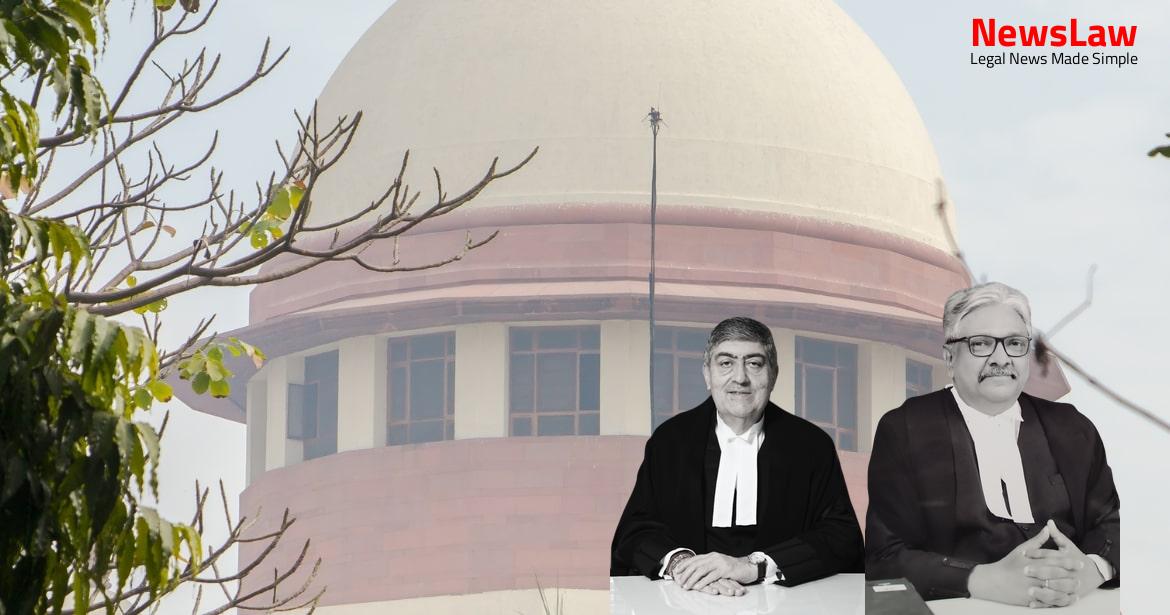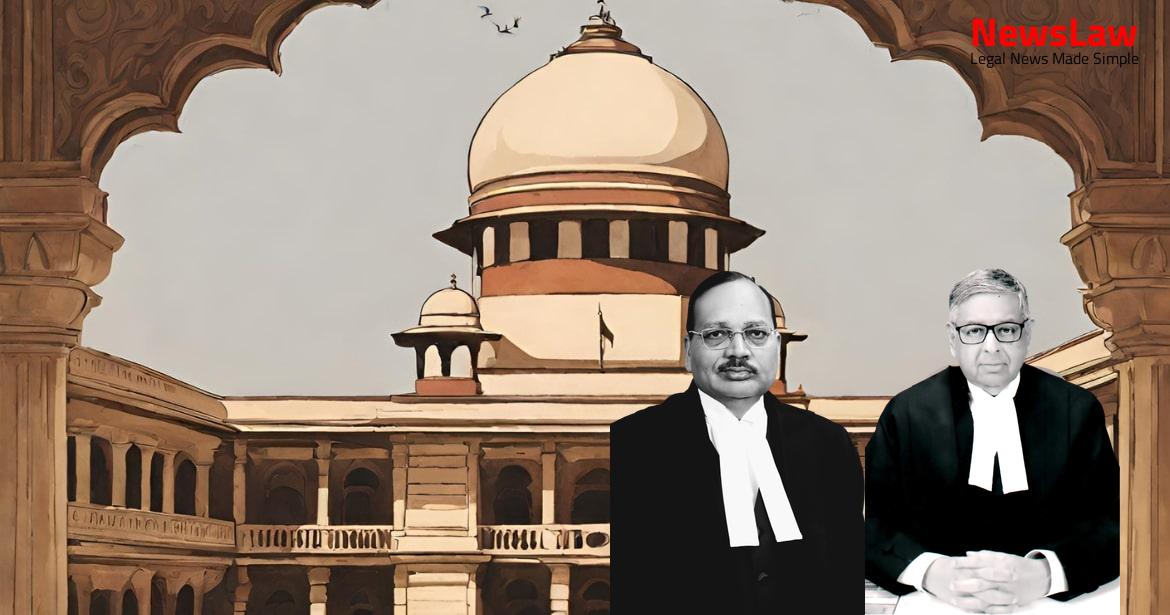In a groundbreaking decision, the Supreme Court of India has reached a verdict in the highly publicized Kerosene Incident Case. This case has garnered widespread attention for its complex legal intricacies and the involvement of key individuals. The judgment is set to have a lasting impact on the legal landscape, setting a precedent for future cases. Stay tuned for more insights into this historic ruling.
Facts
- Mother of the deceased went to the matrimonial home of another daughter on 23.01.2008 and noticed the smell of kerosene emanating from the body.
- First Information Report lodged on 27.01.2008 based on a dying declaration under Section 307 of the IPC which was later converted to Section 302 after the deceased succumbed to burn injuries.
- Appellant did not provide any explanation for the presence of kerosene oil in the house and on clothes after the incident.
- Discrepancy in timings from testimonies was considered inconsequential due to memory lapses.
- The deceased had deep burns on various parts of her body ruling out petrol as the cause of injuries.
- Prosecution’s case was that appellant poured kerosene on the deceased resulting in her catching fire and eventually dying.
- Two dying declarations made, with the second one implicating the appellant directly.
- The High Court and Trial Court relied on evidence of witnesses supporting the dying declaration.
- Defense of a conspiracy by other family members found frivolous.
- Photographs taken at the scene corroborated the dying declaration.
- Appellant convicted under Sections 302 and 506 of the IPC by the Trial Court and subsequently unsuccessful in the High Court appeal.
- The trial court and the High Court concluded without material evidence that the deceased was compelled to give a false dying declaration by the accused’s relatives.
- The Nayab Tahsildar who recorded a statement confirmed that no one else was present during the recording.
- Due to discrepancies in the dying declarations, it was deemed unsafe to convict the appellant.
- The High Court found the appellant guilty under Sections 302 and 506 of the IPC based on three dying declarations by the victim.
- The appellant was sentenced to rigorous imprisonment for two years under Section 506 and to life imprisonment for Section 302, with both sentences running concurrently.
Also Read: Interpretation of Proviso in Rule 266(3): Legal Analysis in the Case of Teacher Recruitment
Arguments
- The appellant’s counsel argues that the cause of the deceased catching fire was an accident caused by the appellant lighting his biri.
- The appellant’s counsel mentions evidence of the deceased’s husband visiting her in the hospital, prompting her to change her statement the next day.
- The State’s counsel disputes the characterization of the first statement as a dying declaration, citing the recording of a dying declaration by a police officer based on a phone call.
- The theory of a conspiracy to sabotage property claims is brought up, indicating the husband’s involvement in the incident.
- The medical evidence shows the appellant suffered 40% burns, raising doubts about his role as a murderer.
- The appellant’s counsel points out discrepancies in the dying declaration, emphasizing the appellant’s claim to property rights.
- The argument is made that the dying declarations support the case of accidental burn injuries rather than homicide.
- The first two dying declarations made by the deceased do not incriminate the appellant.
- The statement recorded immediately after the incident corroborates the initial statements and supports the accidental burn injuries narrative.
Also Read: Judgment on Inconsistencies in Eyewitness Testimonies: Resham Singh v. State of India
Analysis
- The court discussed the evidence of the Investigating Officer-PW29 regarding the third dying declaration.
- The dying declaration recorded by the SI on the direction of his superior officer is consistent with the second dying declaration and the oral dying declaration made to her uncle, though with some minor inconsistencies.
- The court analyzed the circumstances surrounding the multiple dying declarations and determined the reliability of each based on the facts of the case.
- In cases of inconsistencies between dying declarations, the court must carefully examine all materials and make a decision based on the facts presented.
- The court considered the presence of kerosene as a crucial factor in determining the truthfulness of the dying declarations.
- It was found that the incriminating dying declaration was supported by witness testimonies and other evidence, strengthening its credibility.
- The court emphasized the importance of ensuring that the deceased was in a fit physical and mental condition to make the dying declaration.
- The court noted discrepancies and inconsistencies in the dying declarations but ultimately relied on the declaration found to be true and reliable.
- The duty of the court in evaluating multiple dying declarations was highlighted, focusing on the need to determine which declaration inspires confidence and aligns with the other evidence.
- The court emphasized on the importance of reliability in multiple dying declarations.
- The consistency of the statements throughout all declarations was considered crucial.
- Plurality of dying declarations can be reliable and trustworthy if there is no suspicion about their truthfulness.
- Exceptions to the general rule of hearsay evidence were discussed.
- The immediate cause of death leading to suicide was deemed crucial in dying declarations.
- The shadow of impending death was considered a guarantee of truth in dying declarations.
- Voluntary and fit mental condition were highlighted as key factors for the reliability of dying declarations.
- Scrutiny of all dying declarations was advised to check for trustworthiness and consistency.
- The first dying declaration in terms of timing was given preference.
- The court stressed on the examination of inconsistencies in dying declarations to determine their materiality.
- The version projected in the declaration dated 27.01.2008 is proven by the presence of kerosene as the fuel causing burn injuries.
- The position of kerosene in the inner room aligns with the dying declaration dated 27.01.2008.
- There is no grounds to interfere with the presented facts and circumstances of the case.
- PW29’s statement regarding the presence of kerosene oil in the inner room and the can is deemed credible.
Also Read: Judgment Summary: VSS Applications Fraud Allegations Case
Decision
- Appeal dismissed.
- Appellant released on bail.
- Bail bonds cancelled.
- Appellant to be taken into custody.
Case Title: JAGBIR SINGH Vs. STATE (NCT OF DELHI)
Case Number: Crl.A. No.-000967-000967 / 2015



